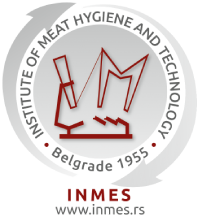Fatty acid composition of cow’s milk: opportunities and challenges for Serbian dairy producers
Abstract
The objective of this study was to investigate whether there is a difference in fatty acid (FA) profile, with emphasis on C18:1cis-9 and conjugated linoleic acids (CLA), of milk obtained from dairy cows under typical farming conditions practiced in Serbia, as well as to investigate variations in fatty acid composition among retail milks labeled differently in relation to fat content (3.2%, 2.8% or 1.5%). Accelerated solvent extraction of milk lipids followed by capillary gas chromatography with flame ionization detector was used for milk FA determination. The results obtained in this study showed that in raw milk, saturated fatty acids (SFAs) accounted for up to 73.73% of the total FAs, followed by monounsaturated fatty acids (23.44 to 26.92%) and polyunsaturated fatty acids (PUFA) (2.72 to 3.92%). Very similar results were obtained in retail milks. The FA composition of raw milk did not significantly differ between the geographical regions examined, except in the contents of C18:2n-6 and PUFA, which were higher in the milk produced in South Banat than in milks produced in Central Banat and in the area of West Bačka and Syrmia. In relation to commercially processed milk, the FA contents varied significantly (p<0.05) between the milks with different declared fat levels. However, from the nutritive point of view, all milks examined should be considered as beneficial to human health regardless of fat content, although opportunities for improvement, as related to dietary guidelines, are present.





